 The Dallergut Dream Department Store by Lee Mi-ye, Sandy Joosun Lee
The Dallergut Dream Department Store by Lee Mi-ye, Sandy Joosun Lee Narrator: Shannon Tyo
Format: audiobook, ebook
Source: supplied by publisher via Edelweiss, supplied by publisher via Libro.fm
Formats available: hardcover, ebook, audiobook
Genres: cozy fantasy, magical realism
Pages: 288
Length: 6 hours and 27 minutes
Published by Hanover Square Press, Harlequin Audio on July 9, 2024
Purchasing Info: Author's Website, Publisher's Website, Amazon, Barnes & Noble, Kobo, Bookshop.org, Better World Books
Goodreads
Before the Coffee Gets Cold meets Mr. Penumbra’s 24-Hour Bookstore in this whimsical, poignant novel about the inner workings of a department store that sells dreams
THE #1 KOREAN BESTSELLER WITH OVER A MILLION COPIES SOLD
In a mysterious town that lies hidden in our collective subconscious, there's a quaint little store where all kinds of dreams are sold ...
Day and night, visitors both human and animal from all over the world shuffle in sleepily in their pyjamas, lining up to purchase their latest adventure. Each floor in the department store sells a special kind of dream, including nostalgic dreams about your childhood, trips you've taken, and delicious food you've eaten, as well as nightmares and more mysterious dreams.
In Dallergut Dream Department Store we meet Penny an enthusiastic new hire; Dallergut, the flamboyant owner of the department store; Agnap Coco, producer of special dreams; Vigo Myers, an employee in the mystery department as well as a cast of curious, funny and strange clientele who regularly visit the store. When one of the most coveted and expensive dreams gets stolen during Penny's first week, we follow along with her as she tries to uncover the workings of this wonderfully whimsical world.
A captivating story that will leave a lingering magical feeling in readers' minds, this is the first book in a bestselling duology for anyone exhausted from the reality of their daily life.
My Review:
In The Voyage of the Dawn Treader, part of the Chronicles of Narnia, one of the places that the Dawn Treader voyages to is the “Island Where Dreams Come True”. What made that part of their journey stick in my head hinges on the definition of “dream”. Because it doesn’t refer to daydreams, the things we think we might like to do or be or have, but rather to the things that our subconscious throws up at us at night.
Some of those dreams may be good, but a lot of them are not – and all of them have the potential to get very, very weird.
If there were a place like the Dallergut Dream Department Store, things would be so much different!
We see Dallergut’s through the eyes of Penny as she interviews with Mr. Dallergut for a job at his store. Through her eyes, we see how the store and the little corner of the world in which it lives and works, well, works.
It’s never called “Dreamland”, but that is what it is. The living, breathing, wide-awake residents seem to be relatively few – and not necessarily human. Whatever they are, their jobs are to either serve the people who work in the dream industry – or to serve the dreamers who pass through each night to buy their nightly dreams at Dallergut’s.
Penny doesn’t so much work her way UP the store’s hierarchy – because it’s a pretty flat organization – as she works her way IN to how the system works.
Dreamers don’t remember they were ever there. They don’t really remember their dreams – as one generally does not. But they do wake up feeling refreshed and with a lingering sense of whatever it was they were looking for within those dreams.
And it’s the lingering sense, that rising emotion, that powers the entire dream economy.
So, as Penny learns how the whole thing functions, we have the opportunity to see what a charming place it is, filled with (mostly) charming people and a whole lot of creativity – along with a strong sense of found family – that makes it a delightful read for a day when all you really want is to escape and (day)dream of a magical place that brings dreams to life!
Escape Rating A-: I’m going to use the word “charming” a lot here, because this story is absolutely that. What makes it work, and what pulls the reader across that hump of “but this isn’t the real world” is that we see the whole thing through Penny, and she’s a newbie at everything.
Not that she doesn’t seem to have grown up as a citizen of the little corner of magical realism – although that’s never really clear – but rather than she’s young and this appears to be her first real job post-graduation and she’s learning about how THE world works and how HER world works and we’re able to piggyback on her learning process.
And she’s just a really nice person to tag along with!
But in spite of the magical realism aspects of the story – what makes it interesting are the personalities of the people that Penny meets and works with, the structure of the dream economy and how it does and doesn’t mirror reality, and the way that the story gently explores the function of sleep and dreams for everyone.
So it’s a found family story and a coming of age story and a bit of a training montage and a lovely, thoughtful metaphor all rolled into a delightful ball of a sweet story that even manages to have a bit of the effect of the “Calm cookies” that Mr. Dallergut likes so much.
 In short, The Dallergut Dream Department Store is utterly charming, and I was absolutely charmed – even in the places where I had to tell the logical side of my brain to go to sleep and just dream the whole thing.
In short, The Dallergut Dream Department Store is utterly charming, and I was absolutely charmed – even in the places where I had to tell the logical side of my brain to go to sleep and just dream the whole thing.
This was, also and absolutely, the perfect book for the mood I was in and the frantic stuff going on in real life, so it was a terrific read for this week. It also fits into the same branch of magical realism, found family and cozy fantasy (or at least fantasy-ish) of Before the Coffee Gets Cold, The Kamagawa Food Detectives and Days at the Morisaki Bookshop – and I’m going to dive into the next book in all of those series pretty much immediately because I need more of this.
But I also need to confess that my impatience got the better of me a bit – so even though I was enjoying the audiobook I still had that urge to see the whole of Penny’s first year at Dallegut’s and switched to the ebook about halfway through.
It’s charming either way, lovely and oh-so-cozy a fantasy. Just perfect for days that you wish you could dream away.

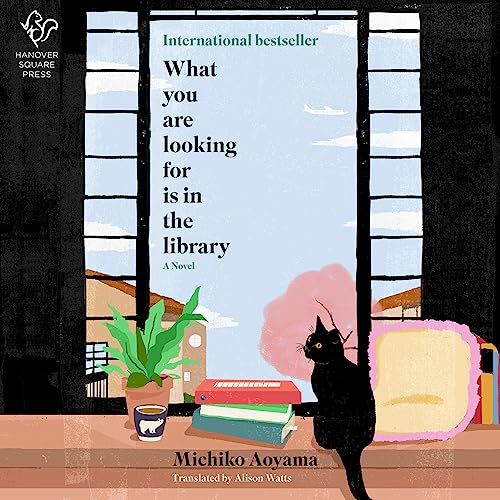 What You Are Looking For Is in the Library by
What You Are Looking For Is in the Library by 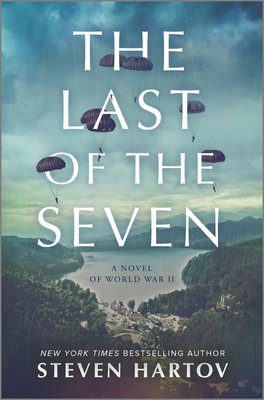 The Last of the Seven: A Novel of World War II by
The Last of the Seven: A Novel of World War II by 
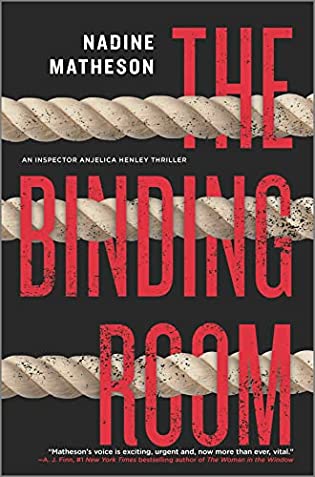 The Binding Room (Inspector Anjelica Henley, #2) by
The Binding Room (Inspector Anjelica Henley, #2) by 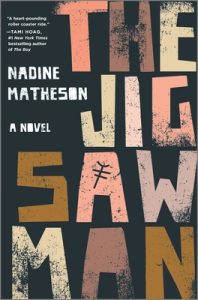 Escape Rating A: I can’t use words like “enjoy” when talking about the reading of The Binding Room, because this doesn’t feel like the kind of story one enjoys – or at least that I enjoy. It’s the kind of story that has me on the edge of my seat, biting my nails, holding down my gorge and making sure all the lights are on. It’s compelling in the way that does not let the reader turn their eyes away because what it at its heart is a display of the many brutal ways in which human beings seriously suck and are entirely too capable of committing terrible evil in the name of the so-called “greater good”.
Escape Rating A: I can’t use words like “enjoy” when talking about the reading of The Binding Room, because this doesn’t feel like the kind of story one enjoys – or at least that I enjoy. It’s the kind of story that has me on the edge of my seat, biting my nails, holding down my gorge and making sure all the lights are on. It’s compelling in the way that does not let the reader turn their eyes away because what it at its heart is a display of the many brutal ways in which human beings seriously suck and are entirely too capable of committing terrible evil in the name of the so-called “greater good”.
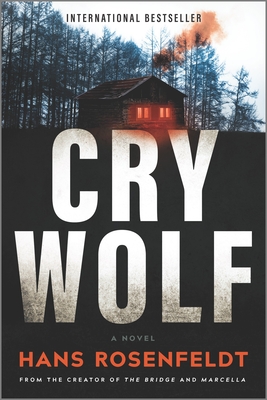 Cry Wolf: A Novel by
Cry Wolf: A Novel by 
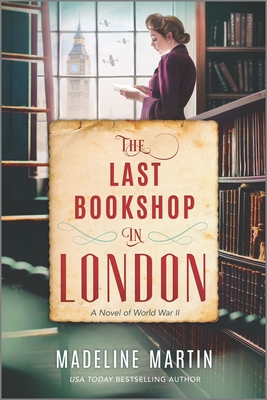 The Last Bookshop in London: A Novel of World War II by
The Last Bookshop in London: A Novel of World War II by 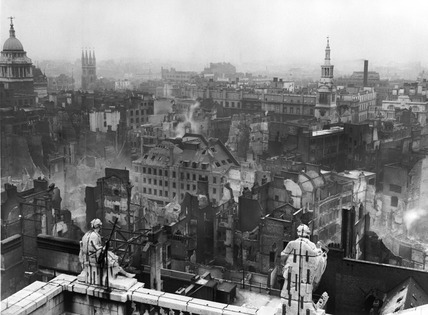

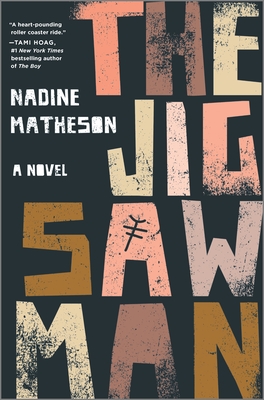 The Jigsaw Man by
The Jigsaw Man by 